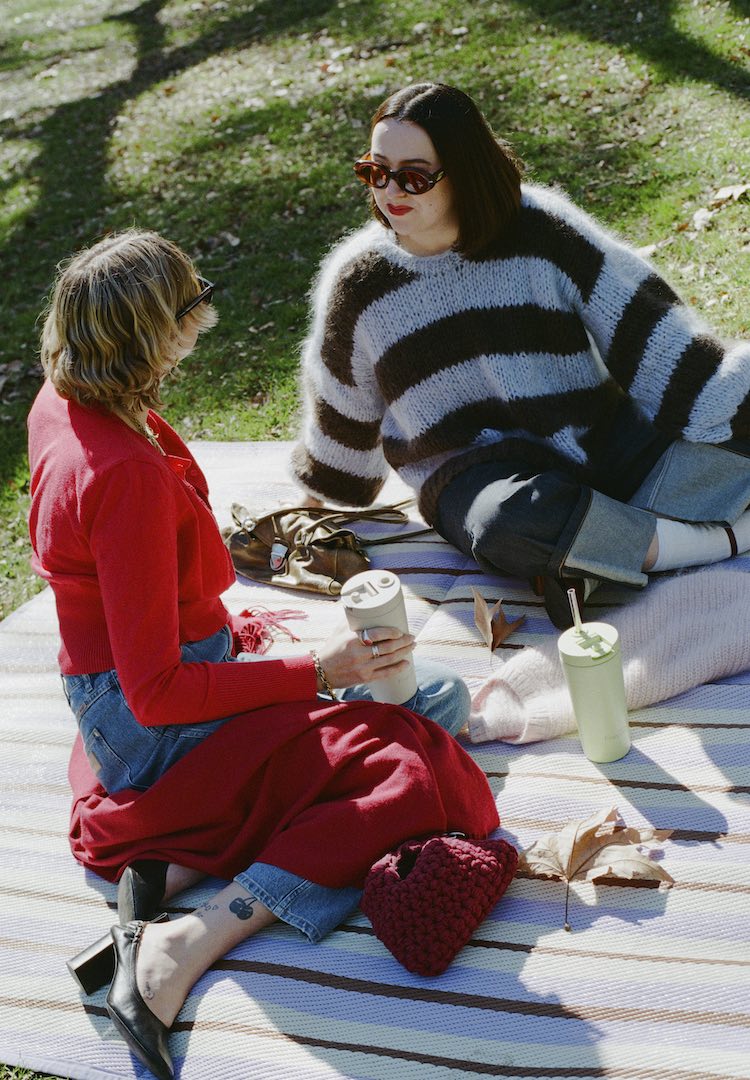Nike is on a journey towards a zero-waste and zero-carbon future, here’s how
IN PARTNERSHIP WITH NIKE
WORDS BY EMILY HOLGATE
The future isn’t in our hands, it vests in big business.
While we might wrestle with guilt each time we forget our reusable cup, more and more of us are now looking to big brands to step up and take responsibility for their impact. According to one study, a huge 71 per cent of young Australians believe brands have a responsibility to make a positive change in the world.
This puts big brands in the spotlight, calling on them to stop shifting responsibility to individual consumers and instead take responsibility for their own impact. This poses a massive challenge to big businesses, but also a massive opportunity.
For more fashion news, shoots, articles and features, head to our Fashion section.
Even the slightest shifts in protocol can have a significant and global positive impact, so when a global brand like Nike steps up to the plate, it’s worth knowing about. The brand is pretty upfront in recognising the responsibility that comes with operating at such a massive scale.
Carmen Zolman, Nike’s VP of Apparel Innovation Design, notes, “When it comes to protecting the future of our planet and the future of sport, we know that the next generation is counting on us”.
Small design changes, big impact
With 50 years of experience under its belt, Nike has a long history of meaningful product innovation to create a better world. There’s a reason why elite athletes favour the brand – it invests in technical developments to ensure real-world change.
From innovative bra design that provides maximum support to footwear that has helped millions of athletes (amateur or otherwise) to break their personal bests, through design, the brand has redefined what’s possible for humanity.
So just imagine the positive impact that same level of investment can have on the planet when focused on sustainability. The most recent innovation from Nike comes in the form of Nike Forward; a game-changing material and innovation platform that connects multiple thin layers of textiles using a needle-punching process to create an end product.
And of course, because it’s Nike, the innovation doesn’t compromise on style. Aesthetics sit at the centre of the latest Nike Forward collection, ensuring consumers are just as excited about the range as the brand is itself. After all, while consumers care deeply about the environment, we still want to look good.
Just one piece of the puzzle
Design innovations like the above are just one aspect of a series of bold targets the brand has set for 2025, helping Nike on its Move to Zero journey towards zero-carbon and zero-waste to help protect the future of sport.
One key focus area is circular design, including how the brand sources, makes, uses, returns, and reuses its products. A number of Nike products and collections now use different design innovations to keep them in circulation for longer.
Take earlier this year, when Nike launched the ISPA Link footwear with interlocking technology to connect modules without any glue. The innovation allows for complete disassembly of the shoe, making it easy to recycle.
Perhaps most impressively, Nike has also published a Circular Design Guide. It shares the brand’s insights and learnings across 10 circular design principles and is available to the public – including Nike competitors – as a way to help the industry lessen its impact on the planet. Also among the 2025 water targets was to restore 13 billion litres through a portfolio of projects, including one here in Australia.
The Murray-Darling Basin Project, which is supported by Nike and in partnership with The Nature Conservancy, saw 84,000 hectares of biodiverse wetlands and floodplains in Gayini Nimmie-Caira ultimately transferred back to the ownership and management of its Traditional Custodians, the Nari Nari Tribal Council.
Supporting long-term resilience for water-stressed ecosystems, the project also helps protect the habitat of hundreds of species, as well as permanently protect and manage the wetlands, floodplains, woodlands and native grasslands at Gayini Nimmi-Caira in the Murray-Darling Basin.
Another focus area is accounting for the post-consumer journey. That is, what happens to its products after shoppers take them home. Last year in Australia, Nike ditched plastic bags for good, replacing them with reusable paper or tote bags in all Nike-operated stores. The brand also has a ‘Save our Soles’ recycle box in every Nike-operated store across our country, thanks to local organisation, TreadLightly.
This enables customers to drop their worn sneakers in the box and from here TreadLightly arranges for recycling (sorting, breakdown and processing), and the extraction of reusable components such as rubber, leather and fibres. It’s also worth noting that Nike shares a significant amount of information on Move to Zero publicly, including annual reports of progress against targets, marking a strong example for the industry and inviting its competitors to follow suit.
For more information on Move to Zero, head here.













